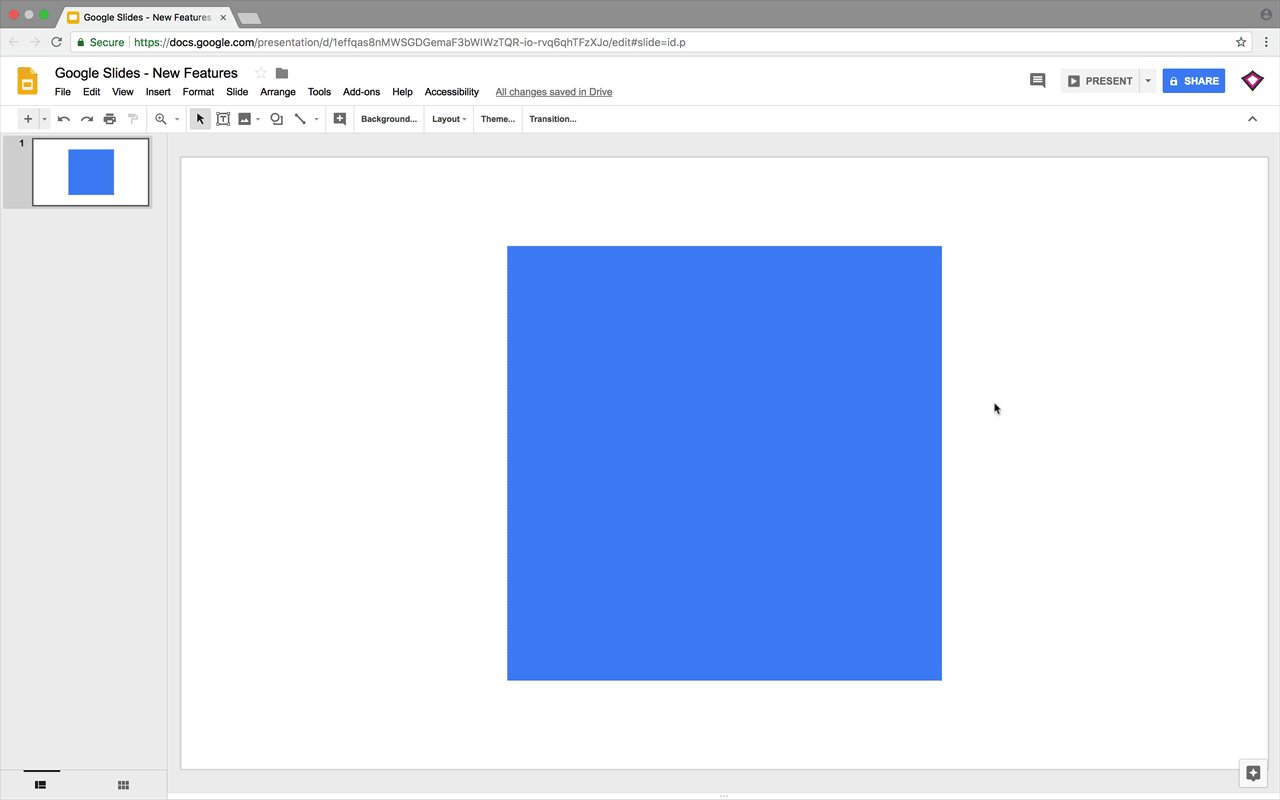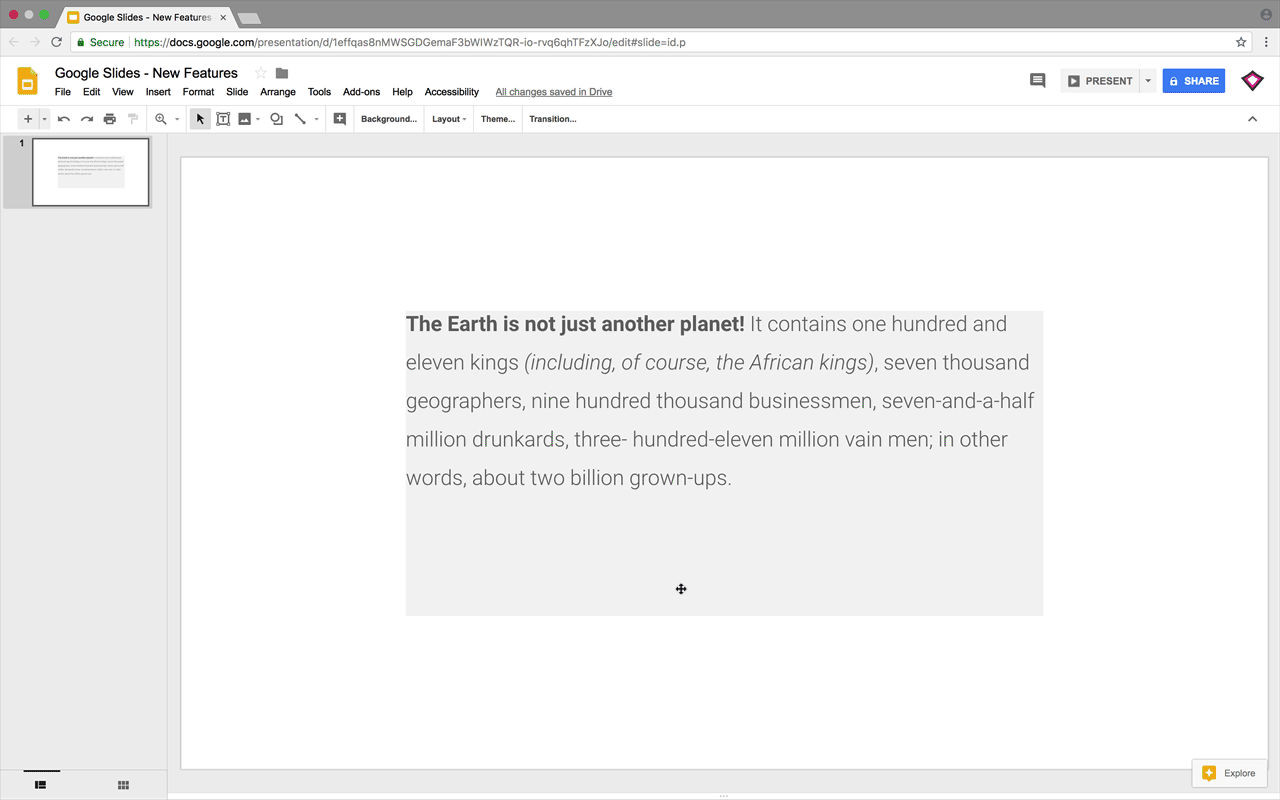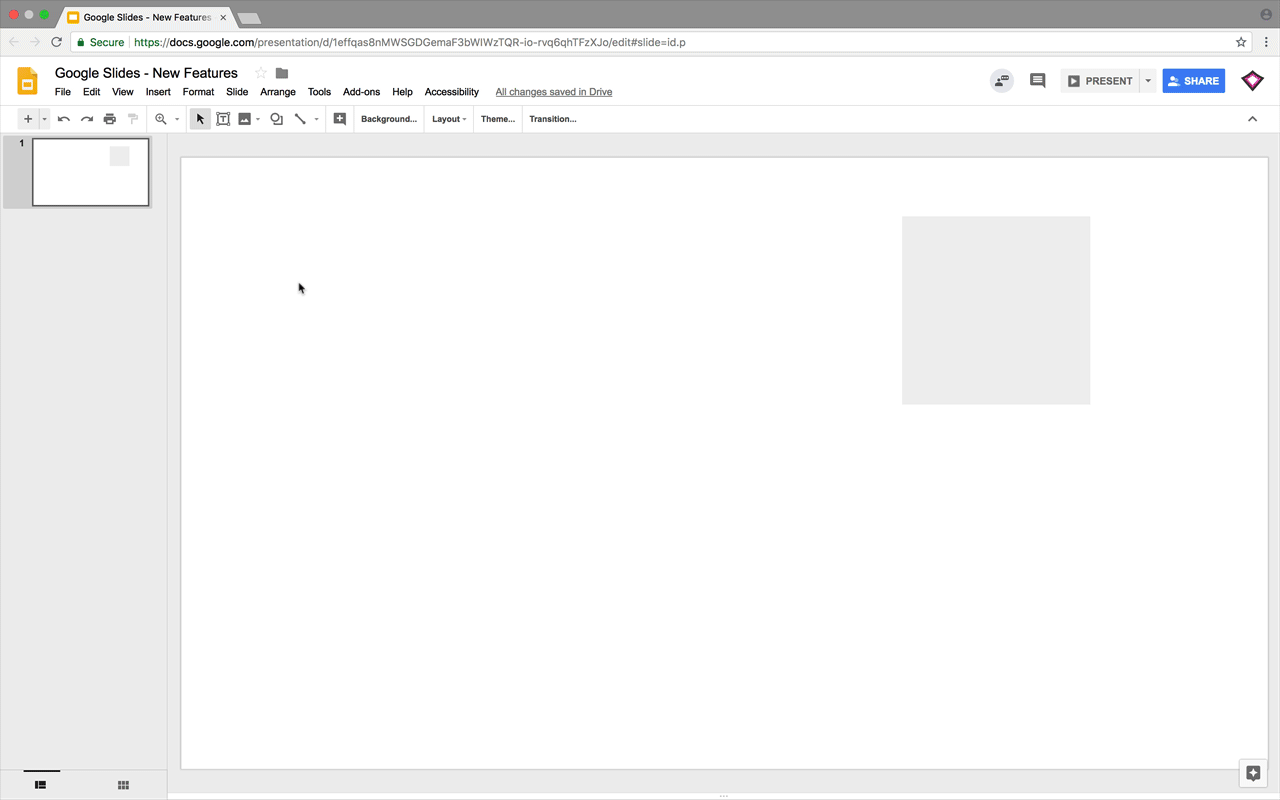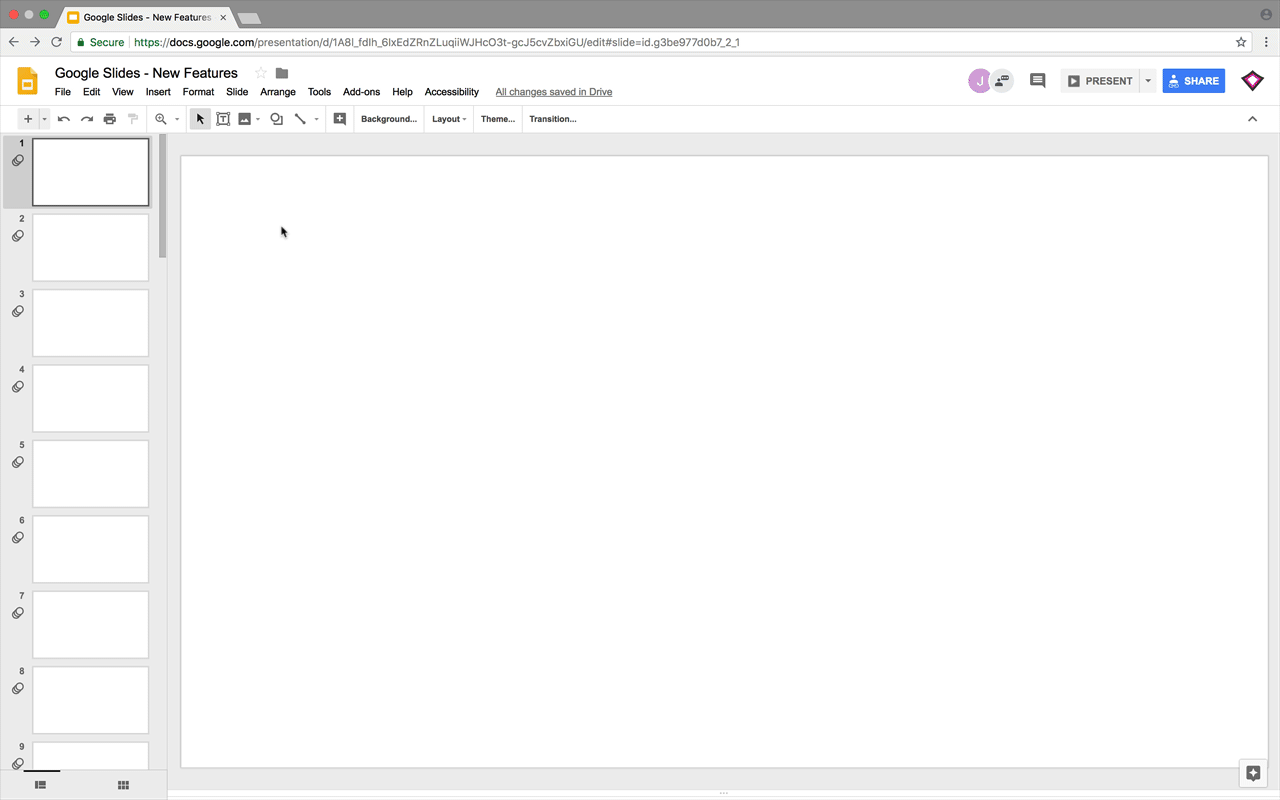How to Get Rid of Text Box in Google Slides
Since launching in 2006, Google Slides has steadily upped its game year on year to become a strong online alternative to other, more established, presentation software. Although Slides still has some work to do to up its overall functionality, Google has recently introduced some long-anticipated upgrades to basic features, and some entirely new tools, too.
We've taken a look and written up a general overview of what's new, so you can make the most of these new features and get the best out of Google Slides. Updates from Google can be easy to miss, so check their blog to keep up to date with the latest additions.
Size & position
New tools for resizing and positioning objects make adjusting text boxes, shapes and images much easier. These hugely underrated features can be accessed by right clicking an object, selecting Format options and then clicking Size & Position (see GIF below).
The new Size options enable more accurate resizing of objects. You can now adjust percentages and dimensions directly by typing new values into the provided input fields. You can also lock aspect ratios so that your object can resize without being warped or stretched.
The new Position tool makes it much easier to choose where an object should be positioned on the slide (centre, top left, etc.).
Similar to the resizing tools, the Rotate options allow for more specific object rotations. No longer do you have to rely on rotating objects by eye, under- or over-shooting and consequently eating your laptop in frustration. For good measure, Google have also added buttons for flipping your object horizontally and vertically.

Text fitting
New text fitting features give users more control over how text behaves within an object. Access these features by right clicking a text box or shape, select Format options , then click Text fitting (see GIF below).
New Indentation tools within the Text fitting tab allow more creative control when laying out text. These basic controls are great for fine-tuning text without altering the object it sits in, or hammering in extra spaces to move the text along (don't ever do that please). Adjust by typing in the size of your desired indentation, in inches, into the provided input fields.

The Text fitting tab has some other handy options you can use to control indentations. These 3 options can be found in a handy drop down menu below Indentation labelled Special :
- None: Keeps all text following the default indentation parameters.
- First line: Adjusts the indentations on the first line of a paragraph, or the space before a bullet point.
- Hanging: Controls the indentation for all lines of text except for the first one, or for spaces after bullet points.
Last in this tab, but by no means least, is Padding . Before this update, all text boxes in Google Slides had a fixed margin around the edge of the text box. This meant that if you wanted to use the guides to align an object with a text box, the text would always be slightly misaligned. For example, if you left-aligned a text box and an object, the text would be a little bit to the right of where it should be because of the left-hand margin. You then had to try and line it all up by eye, and cause your inner graphic designer to throw a sweary tantrum.
But now, the four padding values (top, bottom, left and right) allow you to control the text box margins. So, if you want to perfectly left-align an object with some text, you can just adjust the left-hand margin to 0 and the text will be exactly where it should be.
If you're excited to use these text formatting tools, but aren't sure how to make the most of the typography in your presentation, check out this post for our top typography tips.
Guides
The long wait for guides is finally over! As presentation designers, grids and guides are an essential part of our slide arsenal at BrightCarbon. They are a vital part of setting up a new document, as we've detailed in our PowerPoint templates and masters resource .
Guides provide a consistent, accurate template for designing slides, and we couldn't be happier that Google have finally included them in their program. To view guides, simply click on the View drop down tab at the top, select Guides and then Show guides .
Guides can be inserted and moved around the slide as you see fit. A really nice feature is that if you accidentally move one of your guides when trying to move an object on your slide, you can undo (CTRL + Z) and the guide will move straight back: a useful feature that is missing from Microsoft PowerPoint!

Version history
Whilst version history isn't a new feature, it's certainly changed with the latest update. One of Google Slides' differentiating features is that everything you work on is automatically saved to the cloud. This eliminates the version control worries and opportunities to lose work that hasn't saved properly.
Every time a Slides document is edited, Google saves it as a new version. Accessing these versions is easy. Just click File , go down to Version history then click See version history . Here you can see the time and date of the versions and who worked on them. It can be difficult to locate the version you need, however, especially if you're not sure what time it was edited.
However, the latest update allows you to name the version you have been working on, almost like a 'Save as' feature, making it much easier to find the right version. To do this click File , navigate to Version history again and select Name current version .
You can also name older versions of the document. Open up the Version history again, click the time and date of the version you wish to change and type in a new name.

Final thoughts
With upgrades to basic features and the inclusion of a few key tools, it's clear that Google Slides is now a serious contender in presentation creation. While – admittedly – this update has included a lot of features that a lot of other presentation authoring tools seem to already have, Google have introduced them without changing their stand-out user interface, which makes it so easy to work with.
At BrightCarbon we are hopeful that Google will continue to impress us with even more updates in the future. We'd love to see more control over animations, with the ability to animate objects at precise times instead of in a fixed sequence. A selection panel would also make selecting layered items easier. Finally, introducing what PowerPoint call 'Boolean' tools (more on those here) and Adobe call 'Pathfinder' tools would make building custom shapes much easier. Until the next update, enjoy what new features Google have introduced and have fun making some killer presentations!
Leave a comment
How to Get Rid of Text Box in Google Slides
Source: https://www.brightcarbon.com/blog/google-slides-june-18-update/